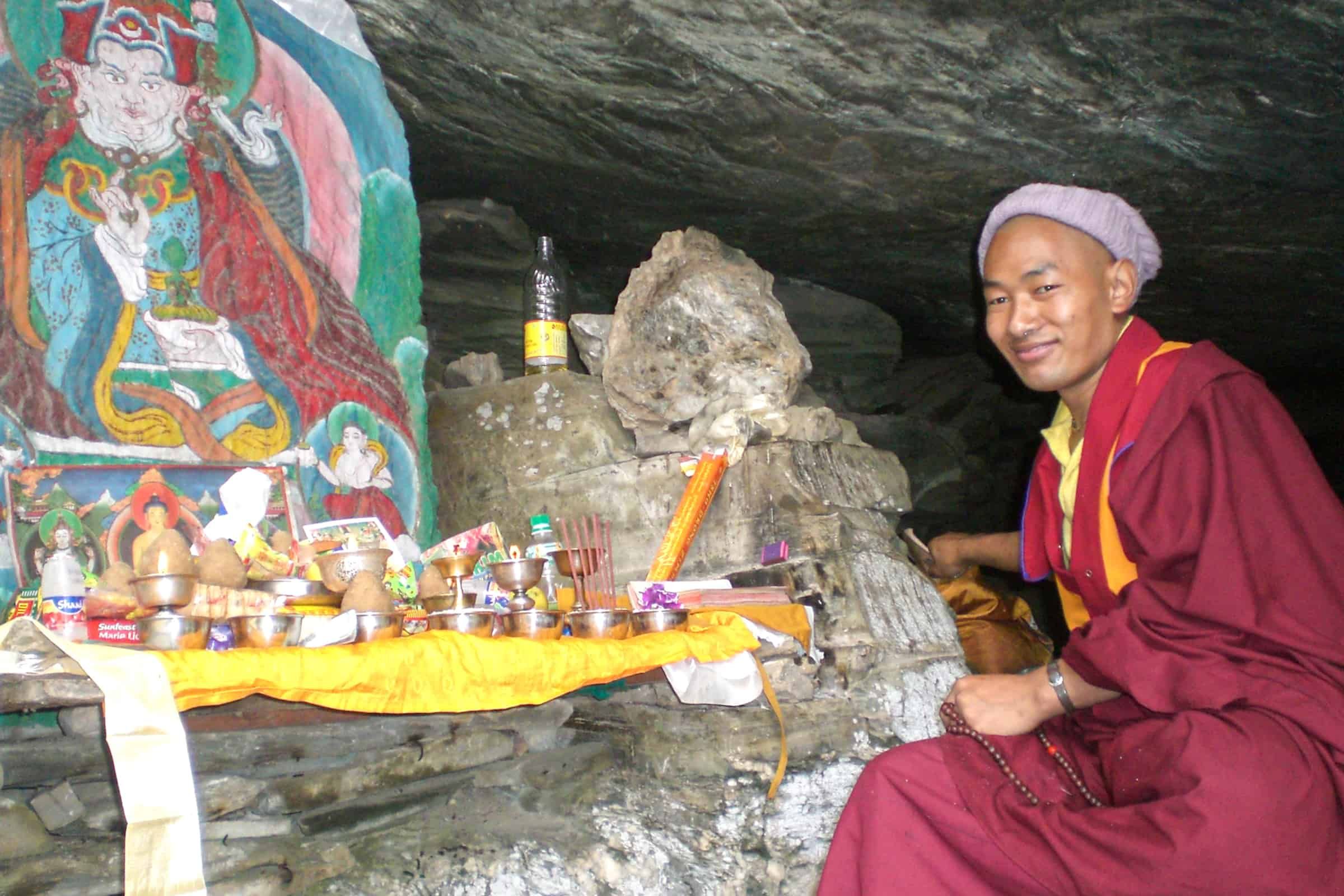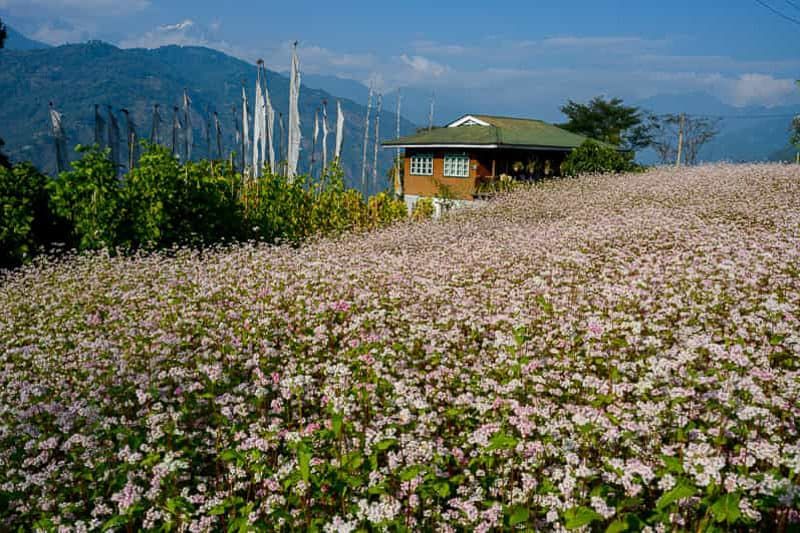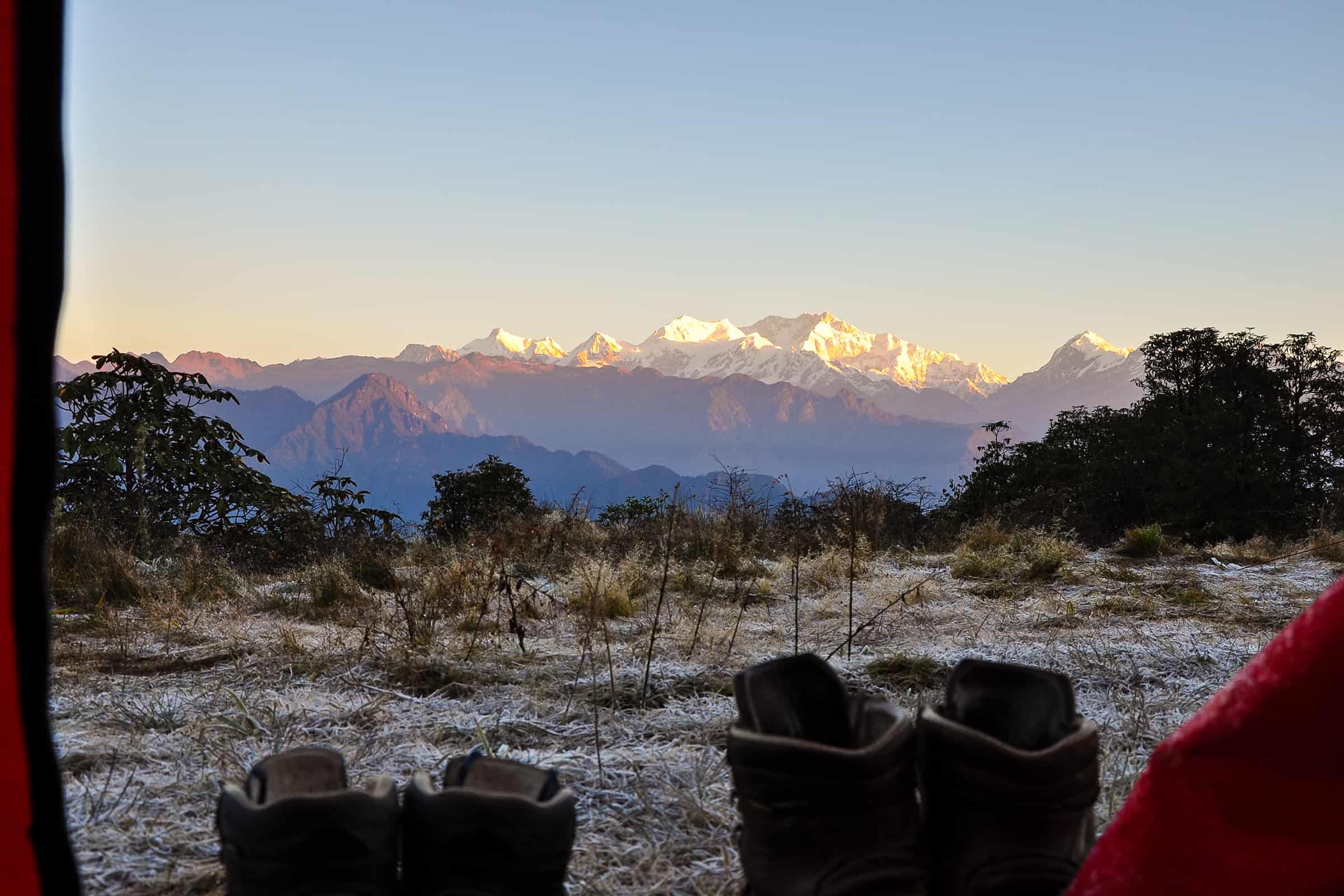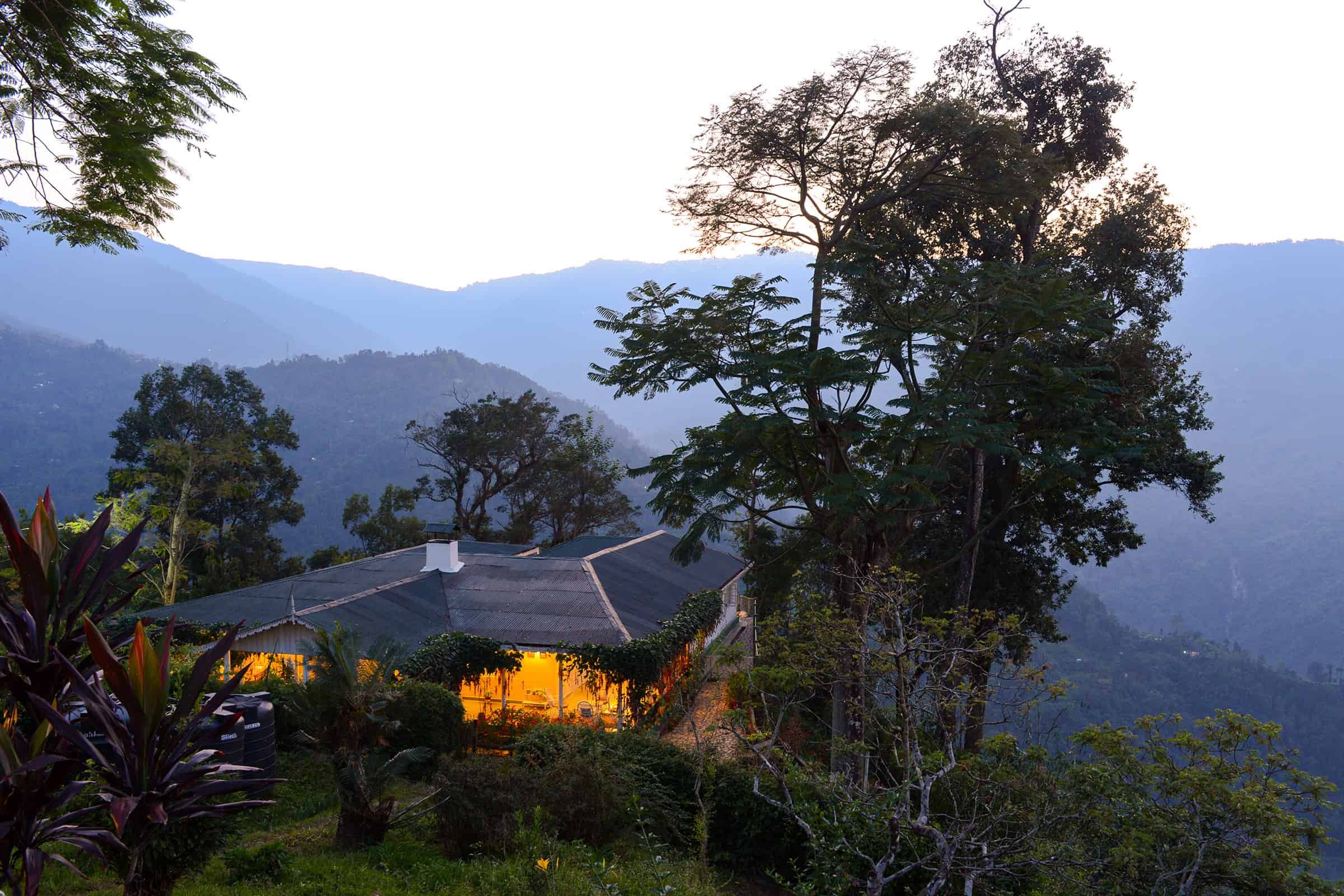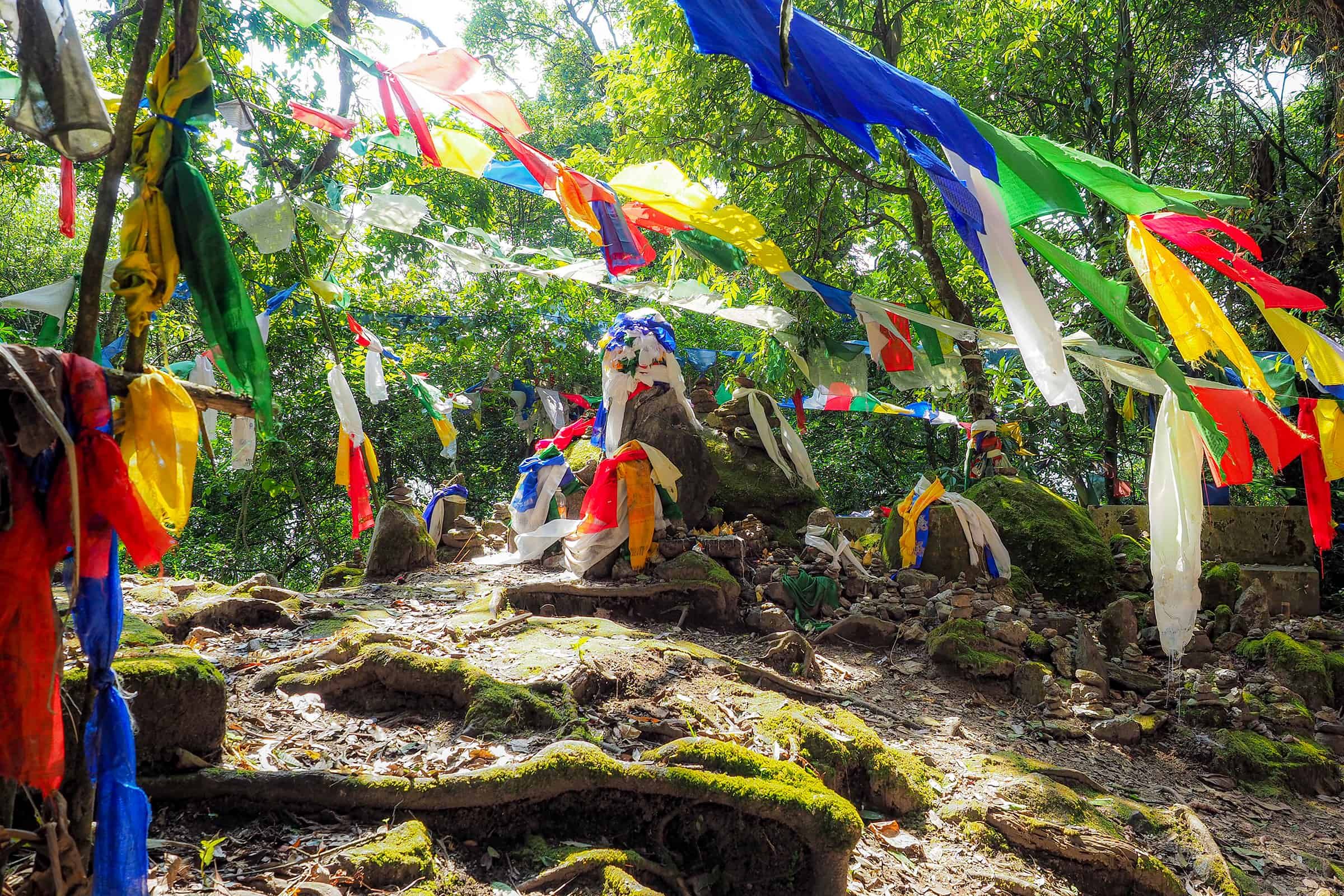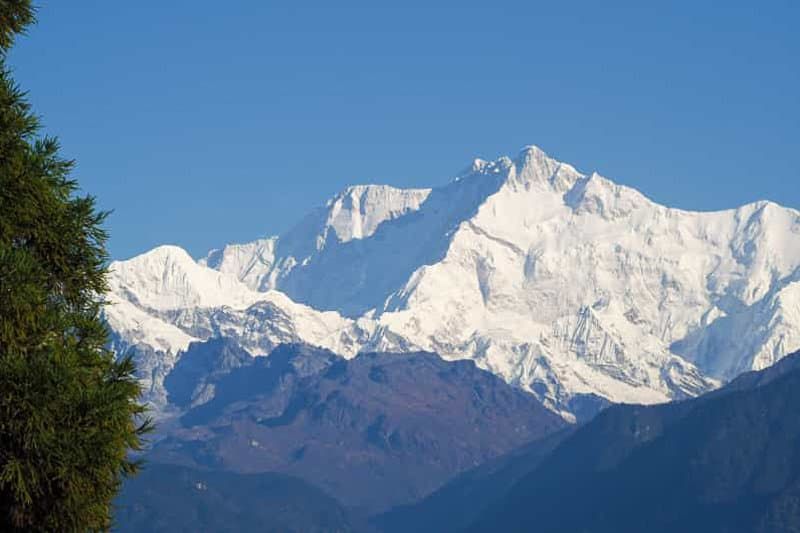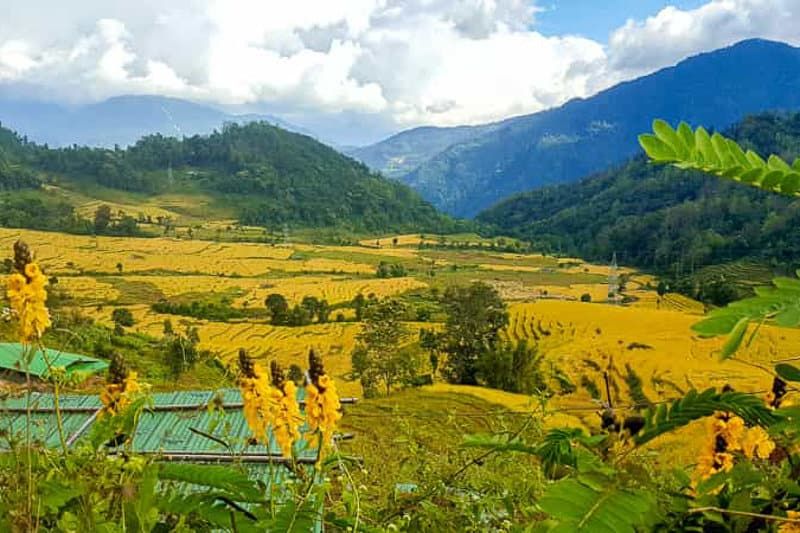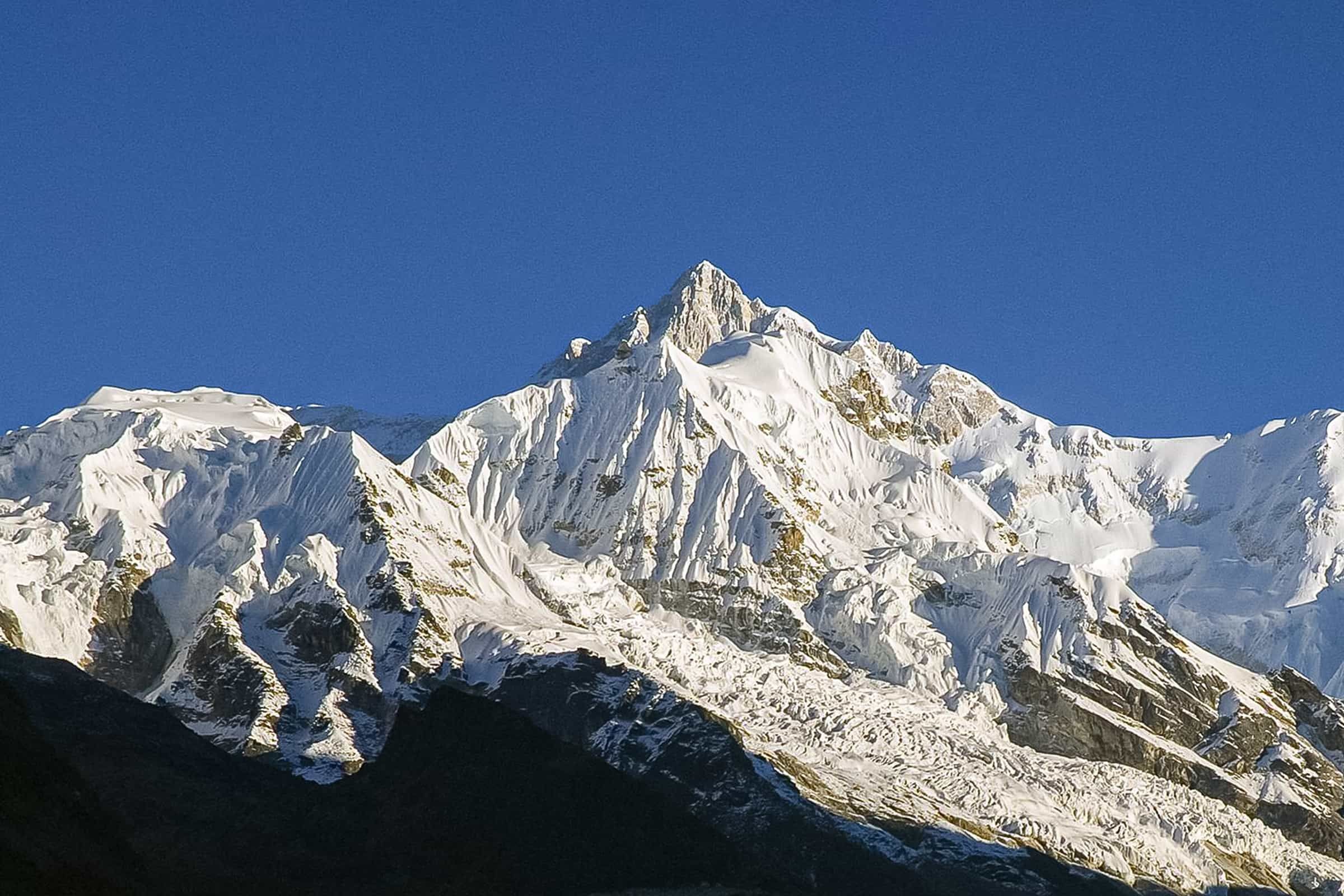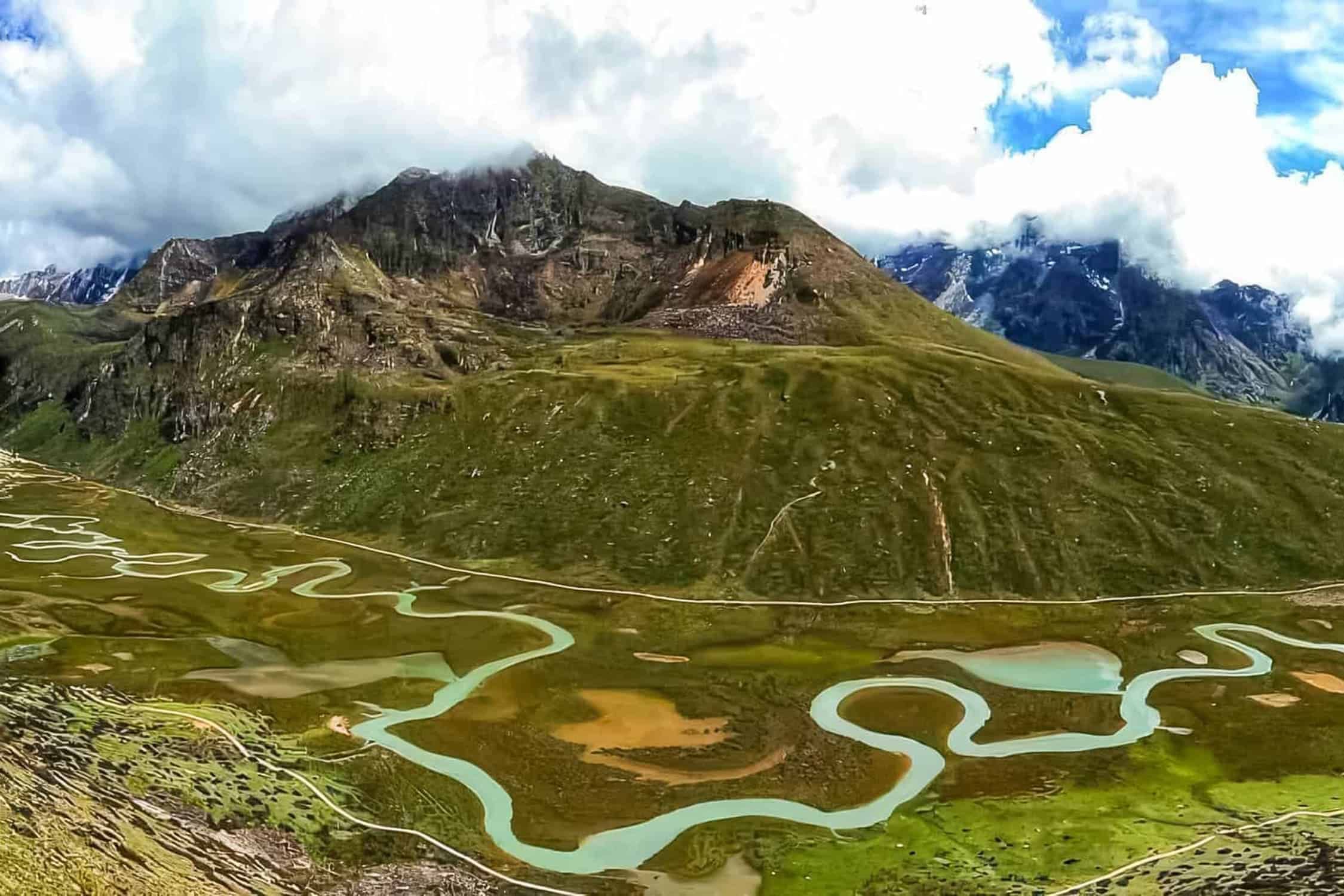Sikkim holy caves trekking and hiking tour

Private tours – Mystical journeys, Trekking (tent)
Tour description
How did Sikkim get its original name, Payul-Demazog, “Land of Hidden Spiritual Treasures”? In the 8th century, Guru Padmasambhava spread Buddhism in Tibet at the request of the Tibetan king Khri-Srong-Die-btsan (755-797). During his tours through Tibet, he visited Sikkim, consecrated the land and prophesied that Buddhism would also establish itself in Sikkim after a few centuries. He is said to have found “spiritual treasures” in the lakes and caves of Sikkim on his tours and prophesied that these would be discovered at the right time in the future and deciphered for humanity in order to make the knowledge accessible to the world. In the Himalayas, Guru Padmashambhava, “the lotus-born”, is also known simply as “Guru Rimpoche” and is revered in Sikkim and Tibet as the “second Buddha”, the incarnation of the historical Buddha Shakyamuni.
Mountain Tashiding is considered the heart of the world by the Sikkimese. The central cave in which the scholar “Guru Rimpoche” is said to have meditated is located here. There are other caves in all four cardinal directions that were visited and named by Guru Rimpoche. These caves are said to be so powerful and so purifying for the body and soul that people believe that anyone who has visited all four will be prevented from being reborn in hell in the next seven lives.
On this tour we will visit all four of these caves. An additional sacred cave is located not far from the Goechela Pass, which can only be reached by trekking for eight to ten days in the Khanchendzonga National Park.
We are happy to customize your tour to your needs.
Combine your tour with other destinations or activities. Contact us – we will be happy to advise you.
Book with us
of experience on site.
Itinerary
- Day 1: Arrival at Bagdogra airport and onward journey to South Sikkim
You will be met at Bagdogra airport by your tour guide at the airport exit to the outdoor area. Transfer from the lowlands to the Himalayan foothills in South Sikkim to a privately run lodge in the countryside. During the drive you will pass by terraced rice fields and lush green subtropical forests, as well as tiny hamlets, bustling villages and deserted jungles inhabited only by monkey communities. We will then reach our accommodations.
Overnight in lodge (1,200 meters). (D) - Day 2: The secret cave of the East
On day 2 we travel along winding mountain roads and visit the “secret cave” Sheyarchokphephu where Guru Padmasambhava meditated. Overnight stay in an simple family house in a Bhutia village (1,550 meters).
(B, D) - Day 3: Hike to the holy mountain of the Lepchas
We will set off in the morning and drive to the starting point of our day’s hike in around 2 hours. The route takes us on a trekking trail through dense jungle rich in biodiversity to Mount Thendonglho, which is sacred to the Lepchas. Then we will hike to the sacred mountain of the Lepchas, Mt. Thendonglho. At the end of the trek we will visit the gigantic statue of Guru Rimpoche at Namchi. Finally, we will return to Bhutia Drof and spend the night in an simple family house in a Bhutia village (1,550 meters). (B, L, D) - Day 4: The Cave of the Fairies in the South
We will visit a local village school and then descend into the valley by foot, to the “Cave of the Fairies, Khandrusangpo”. There is a hot spring nearby where people like to bathe in wintertime. We will continue our journey to West Sikkim and overnight stay in an easy farmhouse lodge in Rinchenpong (1,600 meters).
(B, L/picnic, D) - Day 5: Day hike to Risum Temple
First we will hike through an oak forest to a nearby hill where there is a lonely monastery and, with a bit of luck, can enjoy a beautiful panoramic view of the surrounding mountains and the Kangchendzönga massif with the mountain giants Pandim, Kabru and Narsing at 1,900 meters. Later, we can explore the lonely hamlets with their traditional Lepcha houses and experience the rural, natural way of life of the small farmers. We will have a picnic lunch here. In the evening, we will have the opportunity to attend the evening ceremonies and prayers in the village monastery. Overnight stay in an simple farmhouse lodge in Rinchenpong (1,600 meters)
(B, L/picnic, D) - Day 6: Onward tour to Pemayangtse
We will continue on a mountain road through rice fields and past waterfalls to Pelling. We will hike to the ruins of Rabdentse, the former royal fortress, and then pay a visit to the famous 18th century Pemayangtse Monastery with its uniquely carved wooden sculpture. The monastery was part of the royal government during the kingdom and played an important role. Pemayangtse Monastery is also known as the “Perfect Sublime Lotus”, which means “the all-encompassing, perfect lotus”. If the weather is good, it is worth driving to the Nyingma monastery Sanga Chöling. From there, we can enjoy another splendid view of Kangchendzönga and other snow-capped mountain peaks. From the monastery, we will walk to the Chenrezig statue, which was completed in the fall of 2018. The newly built complex also includes a skywalk and a gallery inside the statue. At 41 meters in height, it is the tallest of the three large statues in Sikkim.
Overnight stay in a privately run lodge (1,700 meters) (B, D) - Day 7: Trekking to a remote hamle
In the morning, we will drive to the starting point of our trek where we meet our trekking team. We will then hike uphill on narrow trekking trails to the campsite at the hamlet of Dechenthang.
Overnight stay in a tents (approx. 2,800 meters) (B, L, D) - Day 8: Trekking to the Cave of Happiness in the west
We continue our ascent to the Cave of Happiness, Nupdechenphug. There will be an opportunity to meditate in the cave.
Overnight stay in tents (approx. 2,800 meters) (B, L, D) - Day 9: Trekking descent to Rimbi and continuation of a tour to Yoksum
We will hike back to the valley, say goodbye to our trekking team and continue our journey to Yoksum.
Overnight stay at the guesthouse in Yuksom (1,750 meters). Hike 4 – 5 hours (B, L) - Day 10: Hike in the area around Yoksum
On day 10, we have a longer hike planned and set off straight after breakfast. As we walk up the hill, the simple houses and their gardens will be very interesting to take in. The black cardamon will be blossoming in the springtime and in the autumn it will be time for harvesting. The 1 to 2 meter high plants are very common throughout Sikkim and provide local farmers with an important income. The harvested capsule fruits are traditionally dried over an open fire in large stone ovens, giving the spice its smoky flavor. Our route takes us uphill for a good 2 hours to a small village. Here we will be invited to a traditional lunch with a local family. Afterwards, the family will show us the terraced plantations on the steep slopes around the house. It’s interesting to see what they grow. In addition to lots of vegetables, there are also roots and plants that are used to make medicine.
Overnight stay at the guesthouse in Yuksom (1,750 meters). Hike 4 – 5 hours (B, L) - Day 11: Day hike to Hungree Monastery near Yoksum
We will drive to the village of Tshong not far from Dubdi Monastery and hike up to Hungre Monastery.
Overnight stay at the guesthouse in Yuksom (1750 meters). Hike 4 – 5 hours (breakfast, lunch) - Day 12: Tour to the trekking starting point
We will drive to the village of Labdang where we will meet our trekking team and spend the night in tents.
(B, L) - Day 13: Trekking to the Ancient Cave of the Hill god in the North
Our day hike will take us through wooded countryside on trekking trails and to the remote cave of Changlhariningpo. It is one of the most sacred caves and is difficult to reach. A good dose of determination is needed to make it up the steep path to the cave. The reason why local pilgrims keep taking the long path is because of the powerful spiritual treasures that are said to be found here. Terton Rinchen Lingpa found treasures deposited there by Guru Pdmasambhava and deciphered them for the world. Promising things are said to be fulfilled here, including what the translation by Ringu Tulku mentions, among other things, a long life, wealth or children’s blessings.
Overnight stay in tents (approx. 3,000 meters) (B, L, D) - Day 14: Visiting the “Cave of the North”
Rest day at the Lharininmpuk cave.
Overnight stay in tents (approx. 3,000 meters) (B, L, D) - Day 15: Trekking to Labdang and visit to the central cave in Tashiding
We will hike back to Labdang and continue our tour to Tashiding. The Tashiding Monastery, which stands on a cone-shaped mountain, is surrounded by numerous temples and chortens (stupas). It is said that just seeing one of these chortens cleanses all sins. We can try this out! The prayer walls with the mantras artfully carved in stone are also beautiful. Unfortunately, the stonemason who created all these works of art passed away a few years ago. Of course, we will also visit the “Central Cave” which is located there. Later in the afternoon, our journey arrives back to where we started, at the Bhutia village. Here we will be guests in the home of a local family. We will have the opportunity to immerse ourselves once again in the culture of the Bhutia Sikkimese, who originally came from Tibet. We will end the evening with a traditional Bhutia dinner in the simple kitchen of our host family, followed by a small cultural performance around the campfire. Of course, a “Chang”, a home-brewed beer made from millet, is a must.
Overnight stay in an simple family home in Kewzing (1,550 meters). Travel time approx. 4 hours. Hike 1 – 2 hours (B, D) - Day 16: Buddha Park, Temi tea garden, rice fields of Martam
On day 16, our travels take us to the town of Ravangla. Here we will make a detour to visit the Buddha Park with the gigantic Buddha statue, which was inaugurated by the Dalai Lama in 2013. Our journey then continues along the mountain ridge and finally through the Temi tea garden to East Sikkim. The Temi ist Sikkim’s largest tea garden and is known for its excellent, organically grown tea. It is an insider tip among connoisseurs. Our journey will then continue via the rice fields of Martam to East Sikkim in the Rumtek region. We will visit the monastery of Rumtek on day 16 or 17.
Overnight stay at the hotel in Rumtek (1,350 meters). Travel time 6 – 7 hours (B, D) - Day 17: Sikkim’s indigenous people and shaman ceremony
After breakfast, we will take a hike on narrow paths across terraced rice fields to a small indigenous settlement. We will walk through the village and gain an insight into village and rural life. We will be invited to visit the village shaman in a house built on stilts. Here we will be allowed to witness a ceremony and enjoy a cup of tea together. We will then visit the Lingdum Zurman Kharwang monastery. Inside the colorful complex, the murals tell of important events in the life of the Buddha. The cosmopolitan monastery also has an active monks’ school. You can often find the young monks learning the Tibetan alphabet by heart or reciting mantras (powerful prayers).
Overnight stay at the hotel in Rumtek (1,350 meters). Travel time 1 hour. Hike 2 – 5 hours (B, D) - Day 18: Monasteries of Rumtek
On this day we will visit the old and new monasteries of Rumtek. In the new monastery we also will visit the “Golden Stupa” if possible and in the old monastery we will attend another ceremony if we have the opportunity. You will be free to choose what you would like to do for the afternoon.
Overnight stay at the hotel in Rumtek (1,320 meters). (B) - Day 19: Day of rest at the Bamboo Retreat or day trip to Gangtok
Today, treat yourself to a relaxing day at the Bamboo Retreat Hotel. Try a regenerating herbal bath and go on a tour of the garden. Or if you prefer, take a day trip to Gangtok with sightseeing of your choice.
Overnight stay at the hotel in Rumtek (1,320 meters). (B) - Day 20: Day of rest at Bamboo Retreat
Overnight stay at the hotel in Rumtek (1,320 meters).
(B) - Day 21: Transfer to Bagdogra airport
After breakfast, we will tour back to Bagdogra airport. (B)
- This trek can be shortened by up to 2 days or extended by 1 – 2 days depending on your fitness level
- This trekking can be ideally combined with our travel modules “Darjeeling“, “Kalimpong“, “Sikkim” or “Bhutan“
Best time to travel
The best travel times for this tour are from October to May.






